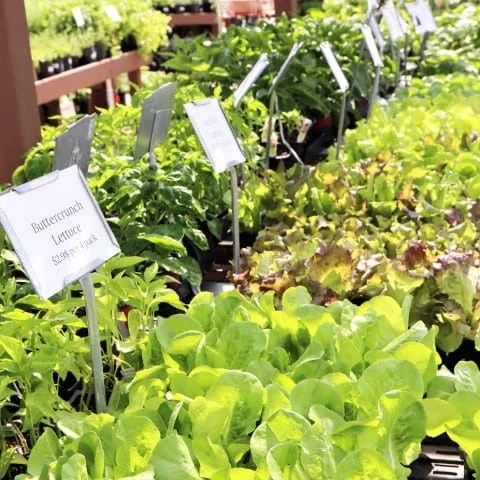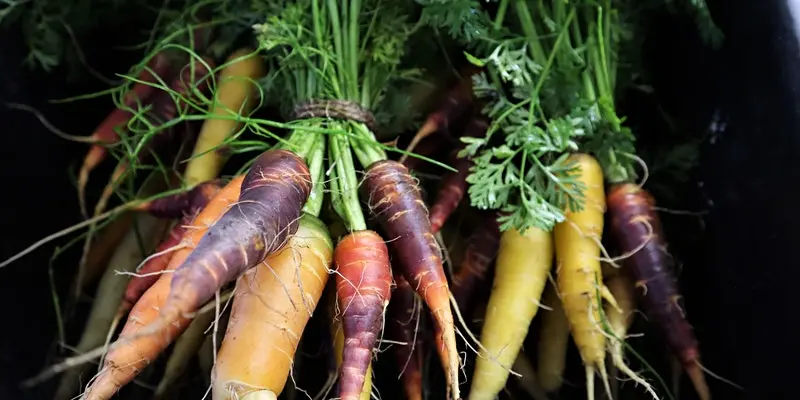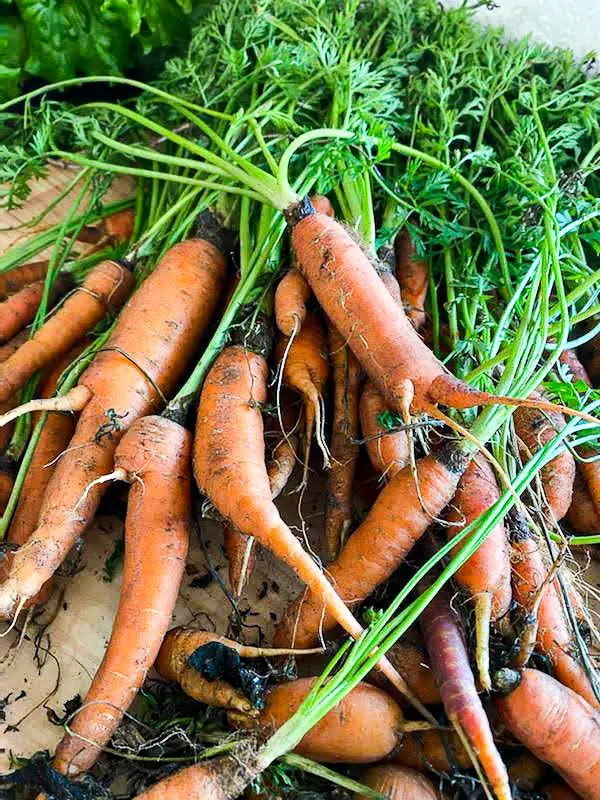by Amanda Rose Newton
Vegetable gardening in Florida can be a challenge! While our climate is excellent for providing tropical fruit rarely seen in other states in the continental US, annual veggie gardening requires a bit more foresight.

National carrot day happens to fall on April 4th, so that seems like a great place to get you started on your vegetable-growing journey.
Carrots (Dacus carota) are also special when it comes to vegetables. For starters, they are biennials, which means they flower in the second year, which sets them apart from their annual garden counterparts. They originated in Asia and have been well-loved for centuries.

Probably the best little-known attribute about carrots is that orange is not the color the original carrots donned. In fact, the now trendy white, purple, and yellow carrots are more on point with the O.G. carrot. Color aside, they are all healthy, kid-friendly, fun veggies to grow for the cooler seasons to come.
How to Plant Carrots
Carrots thrive in cooler months, but that doesn’t mean they are off the table in Florida — it just means you need to plan for them and plant them during the coolest months of the year. Ensuring they receive extra moisture to help their roots grow will make or break your success. Remember, our cooler seasons are the drier seasons. Make sure these guys get enough water!

Make sure the soil is nice and airy to ensure you get the classic carrot shape. Any obstructions may cause the root to branch off, which will make for a different-looking but still quite an edible carrot.
Carrots need 8 hours of sunlight to be their best and should be planted from August to March. If you want a steady harvest, try planting them a few weeks apart to stagger your carrot supply.
Space the rows about 10 inches apart with each at least 1 inch apart from the other. Thanks to the taproot, you do not need to worry about planting deeply. Shallow is fine!
Carrots grown in the Sunshine State tend to be slow to grow, so do not panic if you do not see much happen for a few weeks. Just keep the soil moist and lean into patience. Feel free to start thinning out seedlings once they are an inch or so tall. You can plan to harvest your carrots after 120 days.
Invite Some Friends: Carrot Companions
Carrots do well with other vegetables since they do not take up much space. Feel free to add in other cool-season favorites including other root vegetables like radishes and parsnips.
Radishes, in particular, germinate much faster than carrots do, which can help remind us gardeners where we planted carrots in the first place! Crop rotation is a must with carrots as well since they are a favorite of root-knot nematodes, and planting another vegetable in the carrot spot the following year will help break the pest cycle.
Carrots for Florida
Some varieties do better than others here. Grocery store carrots typically come from more Northern climates for a reason.

All roots (and tubers) are meant to store excess sugars the plant creates during photosynthesis in cooler weather. These starch stores are what make beets, potatoes, and carrots so tasty!
To capture the same carb magic, choose cultivars designed for here:
- ‘Imperator’- classic long carrot look
- ‘Nantes’- orange/red skin with a sweet flavor
- ‘Danvers’- short, stubby carrots with excellent flavor
- ‘Chantenay’- small carrots with wonderful greens
- ‘Cosmic Purple’- purple carrots with orange insides (the original carrot was purple)
- ‘Purple Haze’- another orange inside, purple outside carrot that is sweeter than the cosmic
- ‘Rainbow’- includes a mix of white, purple, orange, and yellow. Why have just one color?
Want to learn more about growing vegetables here in Florida? Join us online or in person for our Grow your own Food seminar on April 22nd, 2023. You can also check our events page for other seminars.


